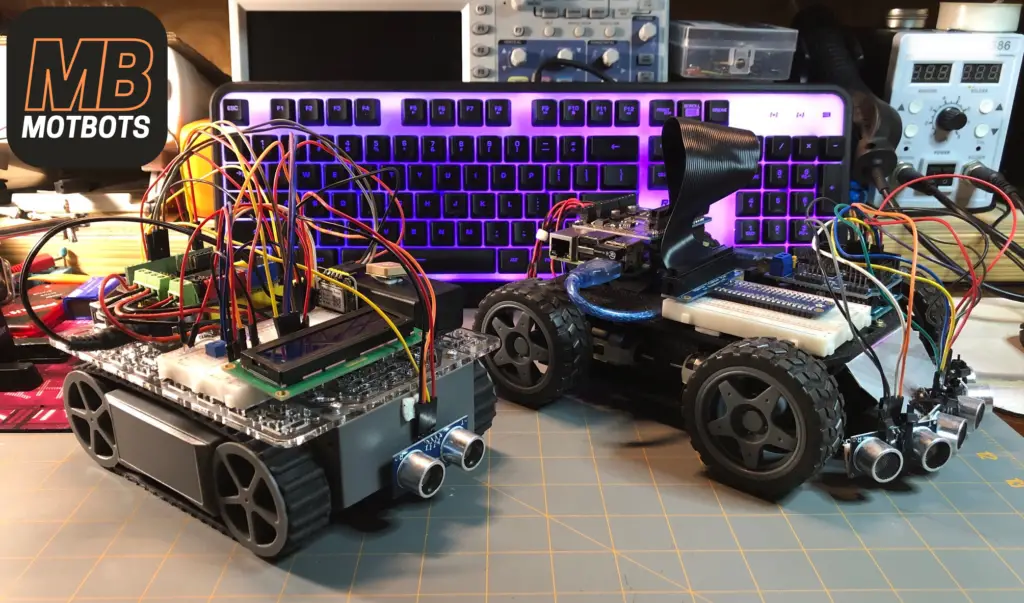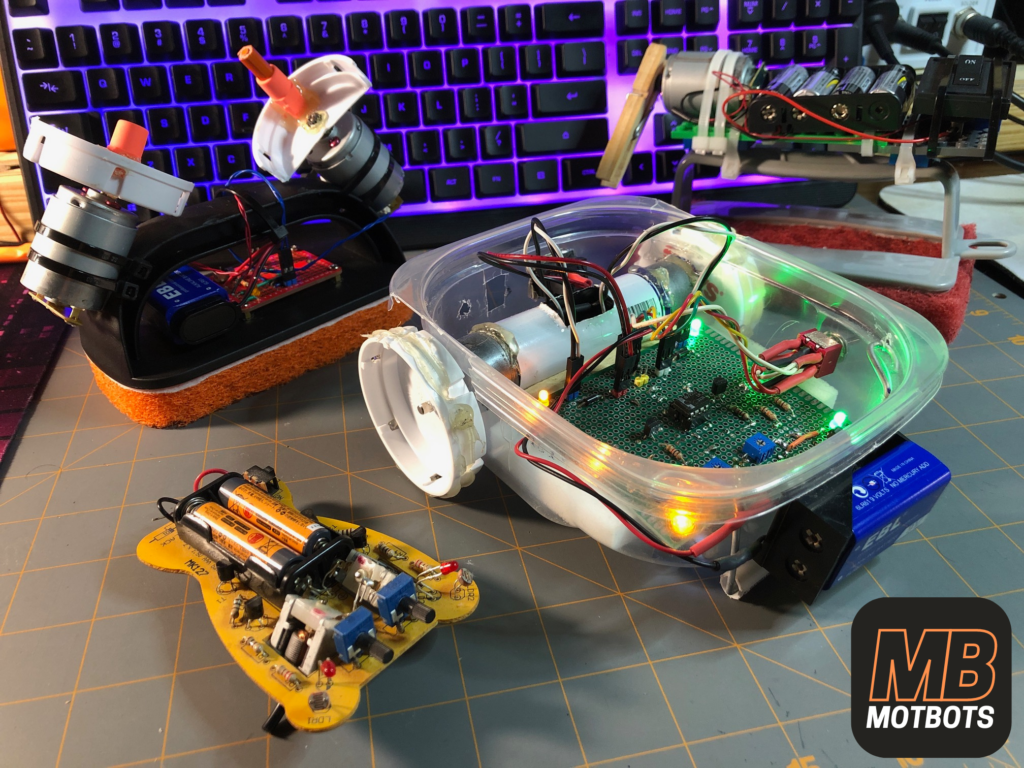What Are 3 Main Traits of All Robots?

Robots can have several traits, in fact dozens of them. To really pin down a few traits, especially 3 main ones is difficult, and most likely controversial depending on who you ask. This is an opinion based blog post, so it’s most likely some will disagree with what is chosen here.
For the most part, if you’re looking at any robot in the world, each provide a pattern to the madness of the uniqueness of each. The 3 main traits of every robot are its power source, its form of locomotion, and its frame.
Before we get into the 3 main traits of every robot, we need to understand what skills are involved in designing and building them. We should also consider the many other features and components that a robot could have beyond its fundamental features.
After we briefly review these topics you will have acquired a broader understanding of the makeup of a robot, of how complex robots can be, as well as have a better understanding of what their fundamental traits are.
Robotics Requires Several Skills
Have you ever thought about what all is involved in the domain of robotics? Have you considered what it takes to design and build one? Designing and building a robot requires several different skills. The following are a few skills that are thought of as being key assets in robotics:
- Mathematics
- Mechanics
- Electronics
- Programming
Robots Can Have Many Features
Indeed, there are many things involved in the design of modern robots and in what kind of functionality they provide to the consumer or end user. Many robots today have built-in components and features that include:
- LEDs
- Screens and Displays
- Sensors
- Cameras
- Night Vision
- Thermal Imaging
- Grippers
- Tools, such as welders or cutters
- And an array of other features and components.
Robots Are Getting Smarter
Robots today are becoming more efficient and smarter. The cleverness of robots today are made possible by the up-and-coming advancements in things like:
- Microcontrollers
- Central Processing Units (CPUs)
- Graphics Processing Units (GPUs)
- Robot Processing Units (RPUs)
- Machine Learning
- Artificial Intelligence
The Nitty-Gritty of Robots: 3 Main Traits
If you get down to the nitty-gritty of what makes up a robot, as in what the main features of a robot are, we could focus on 3 main traits. Of course, cutting down the main features of a robot to 3 traits leaves out the most romanticized features people want in robots, such as human-like features, artificial intelligence, and the ability to communicate.
We only want to focus on the most fundamental traits here. The 3 main traits of a robot are its power source, its form of locomotion, and its frame.
The 3 Main Traits of Robots
- Power Source: In electronics, a power source is a device that provides electrical energy to a circuit. That electrical energy is used to power LEDs and LCD displays, to drive electric motors and many other electronic components. In electric circuits, a power source can be either alternating current (AC) or direct current (DC).
- The most common form of an electric power source for robots is DC, although most industrial robotics use an AC power source.
- The most common AC power source would be the electric power provided by an electric power company in from the mains lines to your typical wall outlet in homes, offices, shops or warehouses.
- A DC power source would be a battery, for example. The most common power source for a robot is the battery.
- A battery provides the electrical energy required for a robot to power its circuits and to allow it to perform its intended functions.
- A power source, such as a battery is vital for a robot, especially if the robot is to be mobile.
- Without a power source, a robot would cease to function, it would be “dead”, and would become an elaborately expensive door stop.
- Locomotion: When I hear the word locomotion, I also think of the word locomotive, which makes me think of trains. Trains were designed and built long ago as a way to get around the countryside and to transport goods and materials. Trains serve their purpose as a way to move people or objects around from place to place. A locomotive is a rail transport vehicle that provides the motive power for a train. Robot locomotion serves a similar purpose, its the method at which a robot moves around its environment. There are many possibilities to design a robot’s method of movement. The most common forms of robot locomotion are:
- Wheels: Wheels are probably the most common form of locomotion in robotics. Wheeled robots are easier and cheaper to build. They are also the most easy to understand when it comes to the design process. Wheeled robots could have 1, 2, 3, 4, 6 or more wheels. The number of wheels a robot has is really up to the designer/builder. The benefit of wheels on a robot is their ease of use and maintenance, and they are relatively cheap.
- Tracks: Tracks are probably a close second for being the most common form of locomotion in robotics. Tracks are similar to wheels, in the sense that they use a rotating surface to push a robot around. The difference between tracks and wheels is that tracks are more complicated in design, they have a much larger surface area that the robot rides on, and they tend to be more costly than wheels. The benefit of tracks on a robot are their large contact surface area on the ground which gives them more traction, like the purpose of tracks on a tank. Tracks on robots make them ideal for outdoor use to be able to drive and maneuver in all types of rough terrain.
- Legs: Legs have always been the ambition of many robotics makers to incorporate into their robot designs. Legs are not a common form of locomotion in most robotics designs. Legs require a lot of extra sensors and computing for a robot to be able to balance and synchronize its legs, so having legs as a form of locomotion is difficult. The benefit of having legs for a robot design means that your robot could tread on a variety of terrain – such as flat surfaces, bumpy surfaces, uneven surfaces, steps, hills, rocks, and more – like humans, insects and animals can.
- Propellers: Propellers are another easy form of locomotion for a robot, especially if its designed to be in water or air. When people think of robots, they mostly think of humanoids, like The Terminator, Boston Dynamics’ Atlas, or Hanson Robotics’ Sophia. People also imagine other robots of fiction, like the ever famous R2-D2, Wall-E, or one of my favorites, Johnny 5 – but less is known about robots that propel themselves in water or air. Marine robots like Blue ROV2, RangerBot, and Thomas the Marine Robot all use the propeller as a means to maneuver themselves under or on the water. Some autonomous aircraft like drones and micro flying robots also use propellers as a form of locomotion in the air. The benefit of propellers for robots, particularly robots designed for water is that it’s an easy and intuitive form of locomotion. Propellers are also the most cost effective means of locomotion for marine or air robots compared to other forms of locomotion available to them.
- Exotics: Exotic locomotion or “exotics” is not a technical term used in robotics, but I use this term here because one, it sounds cool, and two, I use the term to describe the locomotion that aren’t seen or used in everyday robotics circles. These exotic forms of locomotion are things like hopping like a grasshopper or kangaroo, slithering like a snake or worm, and swimming like a fish, shark, or dolphin. Most people who currently design robots with these types of locomotion are in the cutting-edge of robotics design and research, trying to figure out new, more efficient ways for robots of the future to move in their intended environments. It may be too early to know their benefits, but I’d be willing to wager that some, if not most are costly, both in money and time since these forms of locomotion are so new and very customized. Although, I have been seeing more and more of the slithering kind of robots in kits and toys on the market in recent years.
- Others: Although we have mentioned the most common forms of locomotion in robotics above, there are several other forms that we won’t go into much detail here, but are worth mentioning. Some other forms of locomotion in robotics could use hydraulic actuation, like the Robo Jellyfish, developed by Florida Atlantic University, that features soft hydraulic network actuators to swim in water and not damage delicate biological systems in oceans to be able to monitor the oceans. In recent years, there’s been talk about a new form of locomotion in drone technology that uses ion propulsion. A company out of Florida called Undefined Technologies Corp., has had its sights on designing and manufacturing a commercial unmanned aerial vehicle (UAV) that would use ion propulsion as a means to lift itself off the ground. Another possible concept in robotics locomotion is the idea of hybrid locomotion, where a robot uses a combination of locomotion, such as a wheeled robot that could drive on wheels and fly using propellers; or an amphibious robot that can drive on land, then switch its ability to propel itself on water. The sky is really the limit in what forms of locomotion that could be imagined for robotics.
- Frame: Thus far, we’ve mentioned two main traits of a robot; a robot’s power source – its ability to come “alive” and provide power to all its circuitry, and a robots locomotion – its ability to move around its environment; but, these two previously mentioned traits wouldn’t really complete the robot on their own. If all it had was a power source for its components and a means to move around, it would fall apart immediately, there’s nothing keeping it all together. We must have a way to put the robot together in a form to hold these traits secure. The robot needs a frame.
- The frame of a robot includes its chassis, body or structure; it’s what holds everything securely together in one form. The frame of a robot securely holds its power source, its wheels, tracks, propellers or whatever it uses as locomotion, as well as all the other components and circuitry characteristic to the robot.
- A frame of a robot could be made from a variety of materials. Simple, homemade robots can be built from cardboard boxes, plastic cups or plastic sandwich containers. A robot frame can also be made from plastics like polycarbonate, acrylic, or ABS. Frames can also be made from different metals, such as steel, aluminum, or even titanium. There are even some robots made of soft materials; these robots are called soft robots.
- You can think of the frame as being the foundation of the robot. Its size and shape will determine what kind of components and devices can be implemented on the robot. The frame determines many of the design processes in the manufacturing of a robot. If a frame is big, it can have many items added to it, but this makes the robot heavier. If the robot frame is small, it’s limited to what could be implemented in it, but it is lighter in weight, which is what you’d want in a drone, for example.

Conclusion
A robot can require many different components, gadgets, and other doo-dads; depending on what its purpose is. Not all robots are designed or built the same way or to function and perform actions in the same way. Like humans, every robot is unique, but every robot requires the same 3 main traits; a power source to keep it “alive”, a form of locomotion to move around its intended environment, and a frame to keep it all together.
